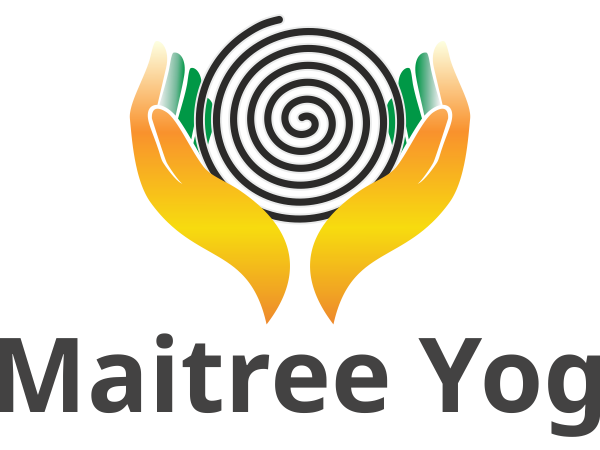Modern man is all set for a revolution after nearly four centuries of continuous growth. From the era of blind faith and superstitions he has progressed a rational thinking, experimentation, matter based approach and its fascinating application to comfort human living.
In the modern era of science and technology, we have change our external lifestyle of competition and high speed automation. We have also internalised a value system geared to make more and more money.
Stress according to Yoga is imbalance. Imbalance is misery. At the Mental and Physical level, it is excessive speed and thus a demanding situation which causes pain and leads to Ailments and Diseases. Lack of holistic knowledge and a balanced outlook, at the subtle levels are responsible found at gross levels.

Thus, while understanding stress, a holistic concept of man is kept in view and not merely hid bodily existence. The “Taittiriya Upanisad” has presented this holistic concept of man systematically as having five major sheaths of existence.
Stress is studies and understood at the physical level by modern medical systems as an imbalance of the neuro-endocrine systems. Emotional imbalance in the form of strong likes & dislikes bring about imbalance in Prana(Vital energy). Origin of desires and action guided by strong right & wrong will be the expression of imbalance at Manamoya Kosa. In Vijnanamaya, the Avidya goes on reducing until in Anandamaya Kosa, it is all bliss. This state is the totally stress free state.
The great sage Patanjali use the term क्लेशः which aptly describes stress. In his tex “Yoga sutras” the ‘Klesas have been described thus:
अविद्यास्मितारागद्वेषाभिनिवेशःक्लेशः llPYS 2-3ll
Avidyā: ignorance; asmitā: I-feeling; rāga: liking; dveṣa: repulsion, dislike; abhiniveśāḥ: fear of death; kleśāḥ: afflictions
Ignorance, I-feeling, liking, disliking and fear of death are the pains.
In our original state we are totally stress free. we are blissful. That state, devoid of any tension and pressure, thinking or feeling, is the source of all bliss, knowledge, creativity and freedom. We may call it perfection. Patanjali calls it स्वरूप Self.
अविद्या leads to अस्मिता, I need, ego and the associated attachment- my mind, my thoughts, my feelings, my body etc. Attachment and I need leads to strong likes & dislikes. It is start to emotional upsurges.
In his mad rush, man gets infatuated, loses the power of discrimination and acts like an animal.
He proposed the techniques of Yoga for reducing stress:
समाधि भावनार्थाः क्लेश तनु करणार्थशच llPYS 2-2ll
Samādhi: samadhi; bhāvanārthaḥ: for developing the state of; kleśa: cause of afflictions; tanu: thin; karaṇārtha: for making; cha: and
For developing the consciousness of samadhi and for the purpose of thinning out the cause of afflictions (kriya yoga is practised). Yoga is to be practised with the purpose of developing samadhi and for thinning out the kleshas. Samadhi need not be discussed now. It is one purpose of kriya yoga. The second purpose is to overcome the kleshas.
ध्यायतो विषायान्पुंसः संगस्तेषूपजयते |
सङ्गात् सञ्जायते कामः कामात्क्रोधोभिजायते ||गीता-२-६२||
dhyäyataù—while contemplating; viñayän—sense objects; puàsaù—of a person; saìgaù—attachment; teñu—in the sense objects; upajäyate—develops; saìgät—from attachment; saïjäyate—develops; kämaù—desire; kämät—from desire; krodhaù—anger; abhijäyate—becomes manifest
क्रोधाद्भवति सम्मोहः सम्मोहात्स्मृतिविभ्रमः |
स्मृतिभ्रंशाद बुद्धिनाशो बुद्धिनाशात्प्राणश्यति ||गीता-२-६३||
krodhät—from anger; bhavati—takes place; sammohaù—perfect illusion; sammohät—from illusion; småti—of memory; vibhramaù—bewilderment; småti-bhraàçät—after bewilderment of memory; buddhi-näçaù—loss of intelligence; buddhi-näçät—and from loss of intelligence; praëaçyati—one falls down.
Repeated thinking about objects leads to attachment, attachment to desires (Strong likes & dislikes) to anger (greed, lust, fear, possessiveness) which in turn leads to infatuation, lack of awareness and power of discrimination and finally one gets lost.
‘Dhyāyato viṣayānpuṁsaḥ’ (Gītā-2-62)
When you go on thinking about the particular object, you go on repeating that again and again, that repeated thinking brings attachment “Saṅgasteṣūpajayate” And this attachment, what does it do?“Saṅgasteṣūpajayate
Saṅgātsaṁjāyate kāmaḥ” (Gītā-2-62)
You get a desire. When an object is attractive then you want it. All because of the inner Kāma, a desire. Responding to that you get your desire fulfilled then it turns itself into greed. For instance, you have a nice car say Maruti 800, you think, I wish I had a beautiful car of Mercedes. This strong desire turns itself into greed and until you succeed
in getting it, the desire goes on looping in your thoughts. Finally, you get frustrated, resulting into anger.
‘Krodho’bhijāyate’ (Gītā-2-62)
As a result of anger, you will lose your memory.
“Smṛtibhraṁśād buddhināśaḥ” (Gītā-2-63)
Once the memory goes, your discrimination power is gone, your analytical faculty vanishes, when your power to discriminate goes then how are we different from Animals? There are four common aspects between Animals and Human beings.
It is the Buddhi, it is the discrimination power, and it is the freedom of choice that characterizes us as human beings. This is the whole dimension as to why the emotions are generated from simple thinking. Because the thinking power itself leads to attachment, which bring attractions and repulsions. And the desires lead to greed and anger. It leads us to infatuation, delusion, memory loss, loss of discrimination.

